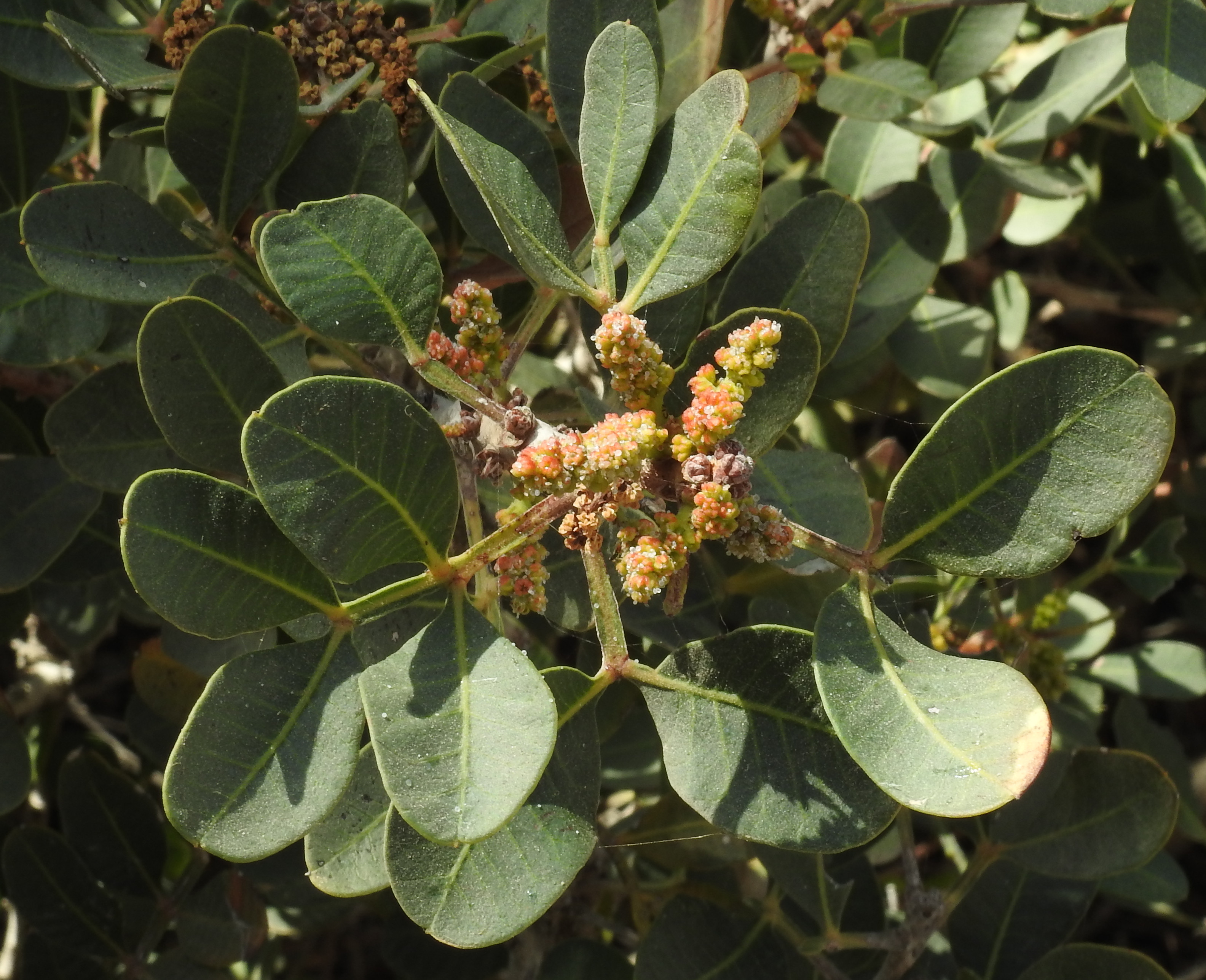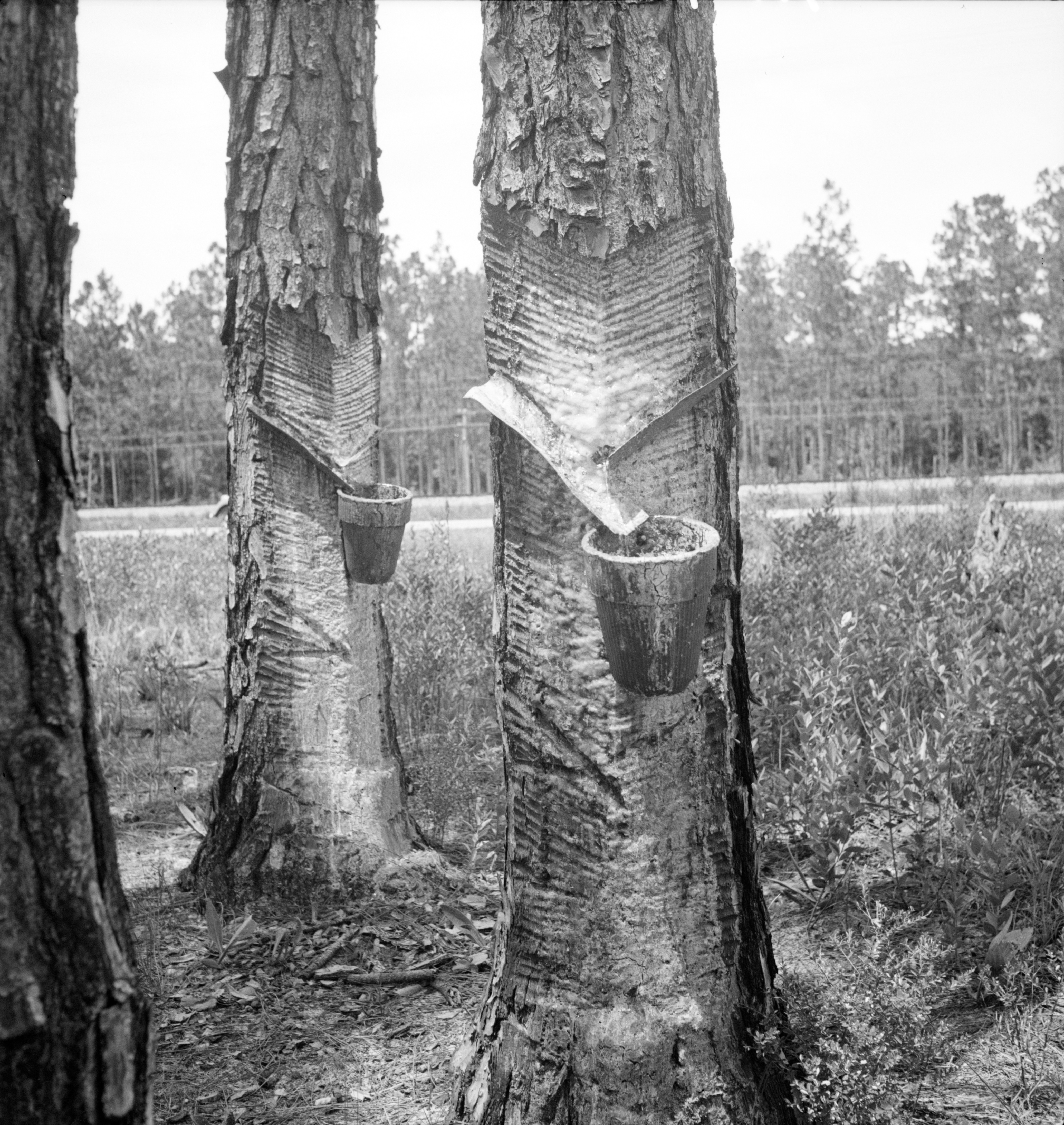|
Terebinth
''Pistacia terebinthus'' also called the terebinth and the turpentine tree, is a deciduous shrub species of the genus '' Pistacia'', native to the Mediterranean region from the western regions of Morocco and Portugal to Greece and western and southeastern Turkey. At one time terebinths growing on the eastern shores of the Mediterranean Sea (in Syria, Lebanon and Israel) were regarded as a separate species, ''Pistacia palaestina'', but these are now considered to be a synonym of ''P. terebinthus''. Description The terebinth is a deciduous flowering plant belonging to the cashew family, Anacardiaceae; a small tree or large shrub, it grows to tall. The leaves are compound, long, odd pinnate with five to eleven opposite glossy oval leaflets, the leaflets long and broad. The flowers are reddish-purple, appearing with the new leaves in early spring. The fruit consists of small, globular drupes long, red to black when ripe. All parts of the plant have a strong resinous sme ... [...More Info...] [...Related Items...] OR: [Wikipedia] [Google] [Baidu] |
Pistacia
''Pistacia'' is a genus of flowering plants in the cashew family, Anacardiaceae. It contains 10 to 20 species that are native to Africa and Eurasia from the Canary Islands, all of Africa, and southern Europe, warm and semidesert areas across Asia, and North America from Guatemala to Mexico, as well as southern Texas. Description ''Pistacia'' plants are shrubs and small trees growing to tall. The leaves are alternate, pinnately compound, and can be either evergreen or deciduous depending on species. All species are dioecious, but monoecious individuals of ''Pistacia atlantica'' have been noted. The genus is estimated to be about 80 million years old. It is a genus of flowering plants belonging to the family Anacardiaceae. The plants are dioecious, and have male and female trees independently; a viable population should have both sexes. Well-known species in the genus ''Pistacia'' include ''P. vera'', the pistachio, grown for its edible seeds; '' P. terebinthus'', from whic ... [...More Info...] [...Related Items...] OR: [Wikipedia] [Google] [Baidu] |
Pistacia Lentiscus
''Pistacia lentiscus'' (also lentisk or mastic) is a dioecious evergreen shrub or small tree of the genus '' Pistacia'' native to the Mediterranean Basin. It grows up to tall and is cultivated for its aromatic resin, mainly on the Greek island of Chios, around the Turkish town of Çeşme''Pistacia lentiscus'' L. a Mansfeld's Database Taxonomy and northern parts of Iraq. Description [...More Info...] [...Related Items...] OR: [Wikipedia] [Google] [Baidu] |
Turpentine
Turpentine (which is also called spirit of turpentine, oil of turpentine, terebenthine, terebenthene, terebinthine and, colloquially, turps) is a fluid obtainable by the distillation of resin harvested from living trees, mainly pines. Principally used as a specialized solvent, it is also a source of material for Organic synthesis, organic syntheses. Turpentine is composed of terpenes, primarily the monoterpenes alpha-Pinene, alpha- and beta-Pinene, beta-pinene, with lesser amounts of carene, camphene, limonene, and terpinolene.Kent, James A. ''Riegel's Handbook of Industrial Chemistry'' (Eighth Edition) Van Nostrand Reinhold Company (1983) p.569 Nowadays, turpentine is rarely the product of distillation of pine resin, but is a byproduct of pulping. Pulping is achieved by two processes, the Kraft process and the sulfite process. The turpentines obtained from these two processes differ in their chemical compositions. The sulfite process gives a product that is rich in cymene, w ... [...More Info...] [...Related Items...] OR: [Wikipedia] [Google] [Baidu] |
Fruit
In botany, a fruit is the seed-bearing structure in flowering plants (angiosperms) that is formed from the ovary after flowering. Fruits are the means by which angiosperms disseminate their seeds. Edible fruits in particular have long propagated using the movements of humans and other animals in a symbiotic relationship that is the means for seed dispersal for the one group and nutrition for the other; humans, and many other animals, have become dependent on fruits as a source of food. Consequently, fruits account for a substantial fraction of the world's agricultural output, and some (such as the apple and the pomegranate) have acquired extensive cultural and symbolic meanings. In common language and culinary usage, ''fruit'' normally means the seed-associated fleshy structures (or produce) of plants that typically are sweet (or sour) and edible in the raw state, such as apples, bananas, grapes, lemons, oranges, and strawberries. In botanical usage, the term ''fruit'' als ... [...More Info...] [...Related Items...] OR: [Wikipedia] [Google] [Baidu] |
Anacardiaceae
The Anacardiaceae, commonly known as the cashew family or sumac family, are a family of flowering plants, including about 83 genera with about 860 known species. Members of the Anacardiaceae bear fruits that are drupes and in some cases produce urushiol, an irritant. The Anacardiaceae include numerous genera, several of which are economically important, notably cashew (in the type genus '' Anacardium''), mango, Chinese lacquer tree, yellow mombin, Peruvian pepper, poison ivy, poison oak, sumac, smoke tree, marula and cuachalalate. The genus '' Pistacia'' (which includes the pistachio and mastic tree) is now included, but was previously placed in its own family, the Pistaciaceae. The cashew family is more abundant in warm or tropical regions with only a few species living in the temperate zones. Mostly native to tropical Americas, Africa and India. '' Pistacia'' and some species of '' Rhus'' can be found in southern Europe, '' Rhus'' species can be found in much of N ... [...More Info...] [...Related Items...] OR: [Wikipedia] [Google] [Baidu] |
Tree
In botany, a tree is a perennial plant with an elongated stem, or trunk, usually supporting branches and leaves. In some usages, the definition of a tree may be narrower, e.g., including only woody plants with secondary growth, only plants that are usable as lumber, or only plants above a specified height. But wider definitions include taller palms, tree ferns, bananas, and bamboos. Trees are not a monophyletic taxonomic group but consist of a wide variety of plant species that have independently evolved a trunk and branches as a way to tower above other plants to compete for sunlight. The majority of tree species are angiosperms or hardwoods; of the rest, many are gymnosperms or softwoods. Trees tend to be long-lived, some trees reaching several thousand years old. Trees evolved around 400 million years ago, and it is estimated that there are around three trillion mature trees in the world currently. A tree typically has many secondary branches supported cle ... [...More Info...] [...Related Items...] OR: [Wikipedia] [Google] [Baidu] |
Leaf
A leaf (: leaves) is a principal appendage of the plant stem, stem of a vascular plant, usually borne laterally above ground and specialized for photosynthesis. Leaves are collectively called foliage, as in "autumn foliage", while the leaves, stem, flower, and fruit collectively form the Shoot (botany), shoot system. In most leaves, the primary Photosynthesis, photosynthetic Tissue (biology), tissue is the palisade mesophyll and is located on the upper side of the blade or lamina of the leaf, but in some species, including the mature foliage of ''Eucalyptus'', palisade mesophyll is present on both sides and the leaves are said to be isobilateral. The leaf is an integral part of the stem system, and most leaves are flattened and have distinct upper (Glossary of botanical terms#adaxial, adaxial) and lower (Glossary of botanical terms#abaxial, abaxial) surfaces that differ in color, Trichome, hairiness, the number of stomata (pores that intake and output gases), the amount and ... [...More Info...] [...Related Items...] OR: [Wikipedia] [Google] [Baidu] |
Flower
Flowers, also known as blooms and blossoms, are the reproductive structures of flowering plants ( angiosperms). Typically, they are structured in four circular levels, called whorls, around the end of a stalk. These whorls include: calyx, modified leaves; corolla, the petals; androecium, the male reproductive unit consisting of stamens and pollen; and gynoecium, the female part, containing style and stigma, which receives the pollen at the tip of the style, and ovary, which contains the ovules. When flowers are arranged in groups, they are known collectively as inflorescences. Floral growth originates at stem tips and is controlled by MADS-box genes. In most plant species flowers are heterosporous, and so can produce sex cells of both sexes. Pollination mediates the transport of pollen to the ovules in the ovaries, to facilitate sexual reproduction. It can occur between different plants, as in cross-pollination, or between flowers on the same plant or even the same f ... [...More Info...] [...Related Items...] OR: [Wikipedia] [Google] [Baidu] |
Carl Linnaeus
Carl Linnaeus (23 May 1707 – 10 January 1778), also known after ennoblement in 1761 as Carl von Linné,#Blunt, Blunt (2004), p. 171. was a Swedish biologist and physician who formalised binomial nomenclature, the modern system of naming organisms. He is known as the "father of modern Taxonomy (biology), taxonomy". Many of his writings were in Latin; his name is rendered in Latin as and, after his 1761 ennoblement, as . Linnaeus was the son of a curate and was born in Råshult, in the countryside of Småland, southern Sweden. He received most of his higher education at Uppsala University and began giving lectures in botany there in 1730. He lived abroad between 1735 and 1738, where he studied and also published the first edition of his ' in the Netherlands. He then returned to Sweden where he became professor of medicine and botany at Uppsala. In the 1740s, he was sent on several journeys through Sweden to find and classify plants and animals. In the 1750s and 1760s, he co ... [...More Info...] [...Related Items...] OR: [Wikipedia] [Google] [Baidu] |
Drupe
In botany, a drupe (or stone fruit) is a type of fruit in which an outer fleshy part (exocarp, or skin, and mesocarp, or flesh) surrounds a single shell (the ''pip'' (UK), ''pit'' (US), ''stone'', or ''pyrena'') of hardened endocarp with a seed (''kernel'') inside. Drupes do not split open to release the seed, i.e., they are dehiscence (botany), indehiscent. These fruits usually develop from a single carpel, and mostly from flowers with Superior ovary, superior ovaries (polypyrenous drupes are exceptions). The definitive characteristic of a drupe is that the hard, woody (lignified) stone is derived from the Ovary (botany), ovary wall of the flower. In an aggregate fruit, which is composed of small, individual drupes (such as a raspberry), each individual is termed a drupelet, and may together form an aggregate fruit. Such fruits are often termed ''berries'', although botanists use a Berry (botany), different definition of ''berry''. Other fleshy fruits may have a stony enclosur ... [...More Info...] [...Related Items...] OR: [Wikipedia] [Google] [Baidu] |
Resin
A resin is a solid or highly viscous liquid that can be converted into a polymer. Resins may be biological or synthetic in origin, but are typically harvested from plants. Resins are mixtures of organic compounds, predominantly terpenes. Common resins include amber, hashish, frankincense, myrrh and the animal-derived resin, shellac. Resins are used in varnishes, adhesives, food additives, incenses and perfumes. Resins protect plants from insects and pathogens, and are secreted in response to injury. Resins repel herbivores, insects, and pathogens, while the volatile natural phenol, phenolic compounds may attract benefactors such as predators of insects that attack the plant. Composition Most plant resins are composed of terpenes. Specific components are alpha-Pinene, alpha-pinene, pinene, beta-pinene, carene, delta-3 carene, and sabinene, the monocyclic terpenes limonene and terpinolene, and smaller amounts of the tricyclic sesquiterpenes, longifolene, caryophyllene, and cad ... [...More Info...] [...Related Items...] OR: [Wikipedia] [Google] [Baidu] |






